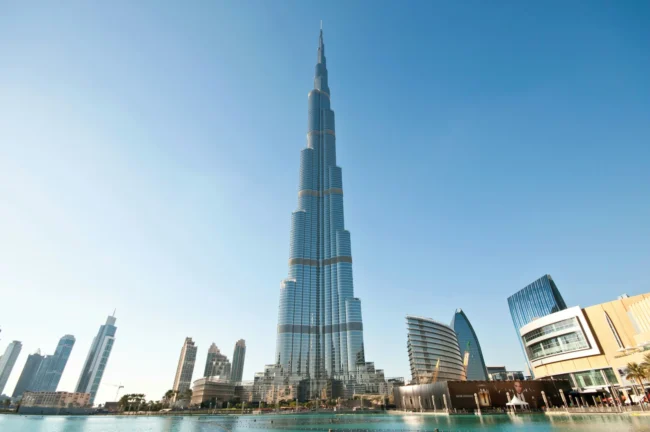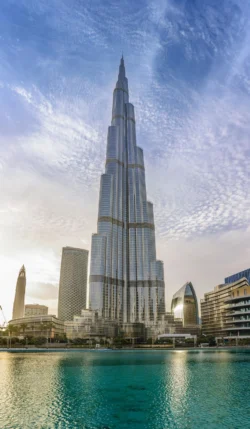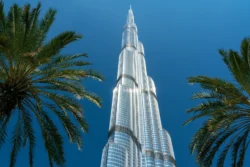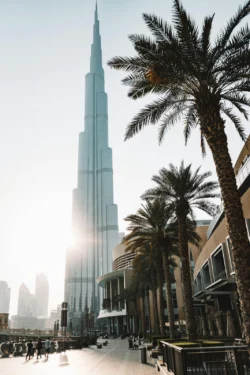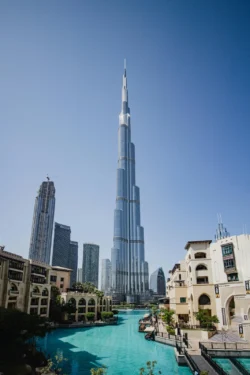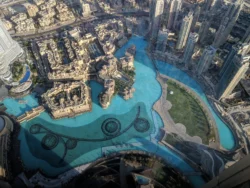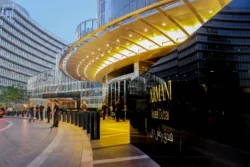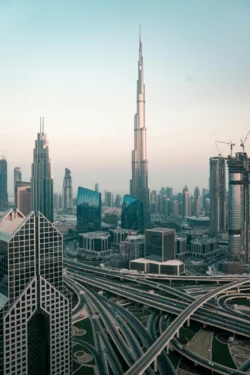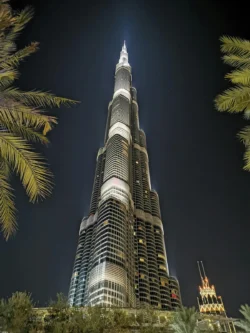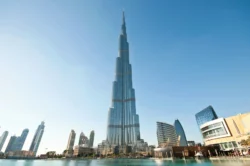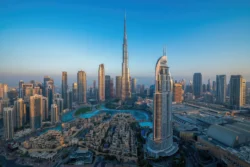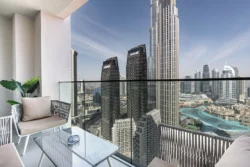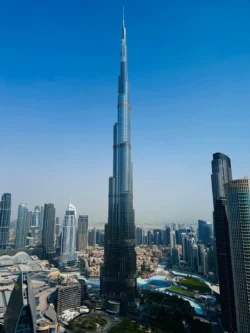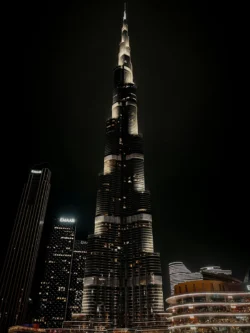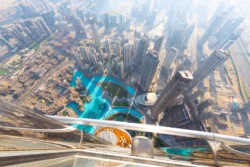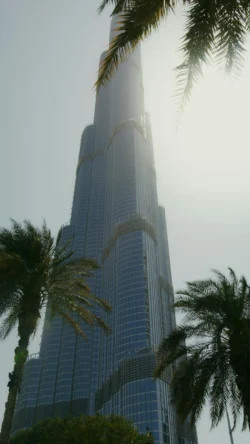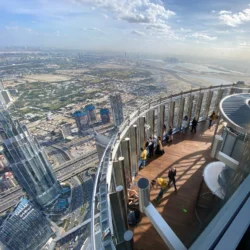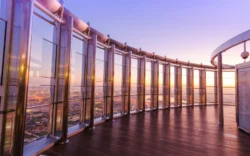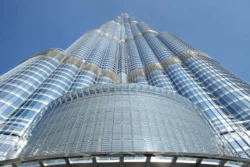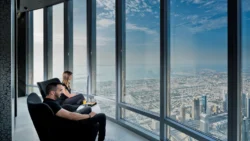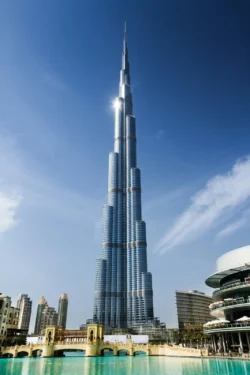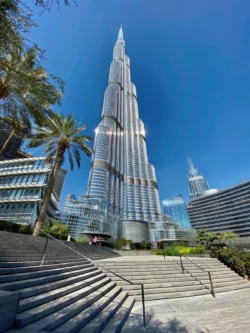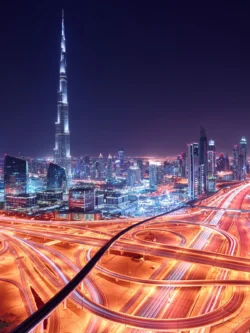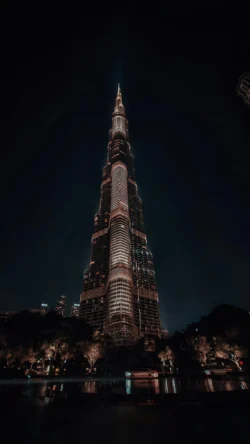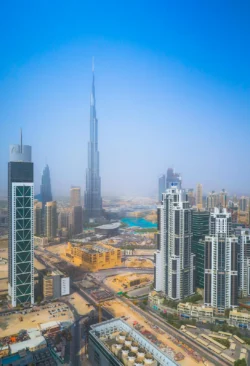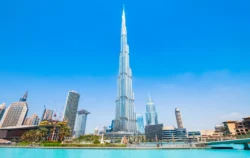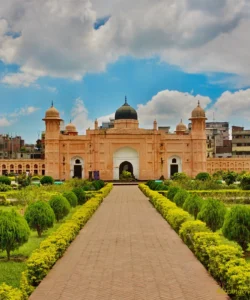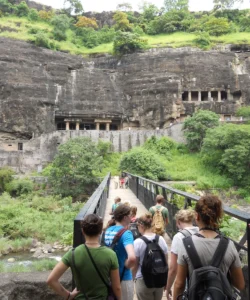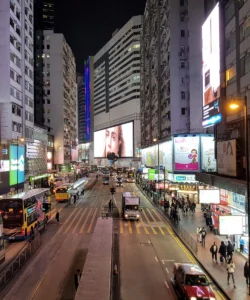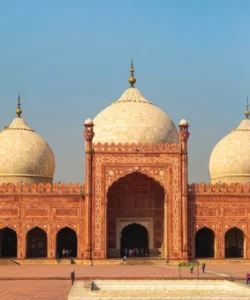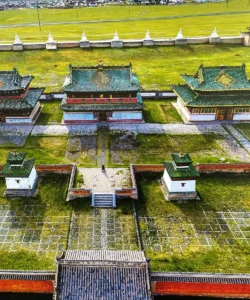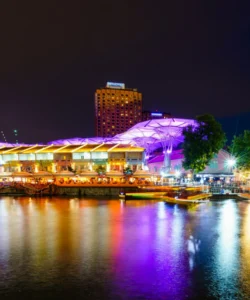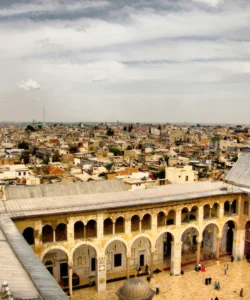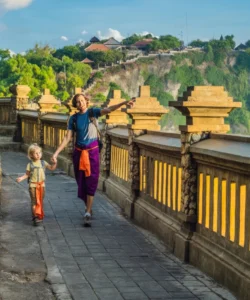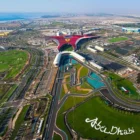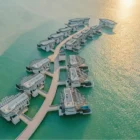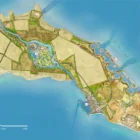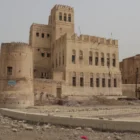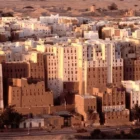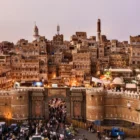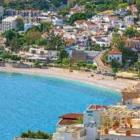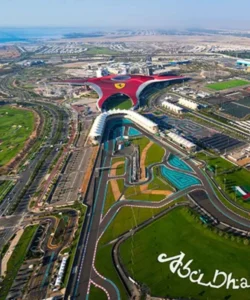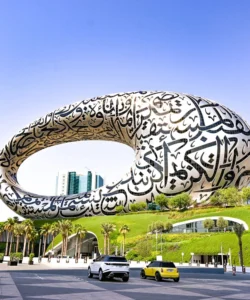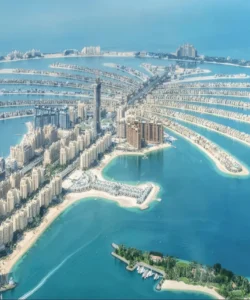The Burj Khalifa is a megatall skyscraper in Dubai, United Arab Emirates, and holds the title of the world’s tallest structure. Opened in 2010, it’s a mixed-use building designed to be the centerpiece of Downtown Dubai, symbolizing the city’s ambition and modernization.
Listen to an introduction about Burj Khalifa
Name and Address
- Name: Burj Khalifa (Arabic: برج خليفة, formerly known as Burj Dubai during construction)
- Address: 1 Sheikh Mohammed bin Rashid Boulevard, Downtown Dubai, Dubai, United Arab Emirates.
- Location: Situated in the heart of Downtown Dubai, adjacent to The Dubai Mall and the Dubai Fountain.
How to Get There
The Burj Khalifa is a major landmark and is very well-connected within Dubai.
- By Metro: The most recommended way to get there is via the Dubai Metro Red Line. Get off at the Burj Khalifa/Dubai Mall Station. From there, it’s a short walk or a bus ride to The Dubai Mall, which provides the main entrance to the Burj Khalifa.
- By Bus: Several bus lines (e.g., F13 to Dubai Mall, or buses 27, 28, 29 to the mall’s main entrance) serve the area. You’ll need a rechargeable Nol Card for bus payments.
- By Taxi/Rideshare: Taxis and ride-sharing services are readily available throughout Dubai and offer a convenient, direct route to the Burj Khalifa.
- By Car: You can drive via Sheikh Zayed Road, with parking available at The Dubai Mall.
- Visitor Access: The Burj Khalifa is open to the public for visits to its observation decks and various facilities. Access to the observation decks (“At the Top” on levels 124 and 125, and “At the Top SKY” on level 148) is primarily through The Dubai Mall’s lower ground floor. It’s highly recommended to book tickets in advance online, especially for sunset times, as they can sell out quickly.
Landscape and Architecture
Designed by Adrian Smith of Skidmore, Owings & Merrill (SOM), the Burj Khalifa’s architecture is a feat of engineering and a blend of modernism with Islamic influences.
- Record-Breaking Height: Standing at 828 meters (2,717 ft) with 163 habitable floors, it holds multiple world records, including the tallest building, tallest freestanding structure, and highest outdoor observation deck.
- Y-shaped Tripartite Design: The building’s modular, Y-shaped floor geometry is inspired by the regional desert flower, the Hymenocallis. This design optimizes residential and hotel space while significantly reducing wind forces on the tower.
- Buttressed Core System: A hexagonal central core is buttressed by three wings, each with its own concrete core. As the tower rises, the wings step back in a spiral configuration, changing the building’s shape at each tier to “confuse the wind” and prevent strong wind vortices.
- Materials: The exterior is clad in reflective glass, textured stainless steel, and aluminum, designed to withstand Dubai’s extreme desert climate. The interior features luxurious finishes like marble, silk, and Brazilian Santos rosewood.
- Spire: The elegant spire, comprising over 4,000 tonnes of structural steel, crowns the tower and houses communications equipment.
- Mixed-Use Facilities: The tower houses the Armani Hotel Dubai on its lower levels, luxury residential apartments, corporate suites, and various leisure facilities including swimming pools, health and fitness clubs, and a library.
- Observation Decks: “At the Top” (levels 124 & 125) offers 360-degree panoramic views, while “At the Top SKY” (level 148) provides an even higher, VIP experience with refreshments.
- Dining: At.mosphere, one of the world’s highest restaurants, is located on the 122nd floor.
- Surrounding Area: The base of the tower is surrounded by the Dubai Fountain (a spectacular water, light, and music show), extensive parkland, and pedestrian boulevards.
What Makes It Famous
The Burj Khalifa’s fame is rooted in its monumental scale, architectural innovation, and its status as a global icon:
- World’s Tallest Building: Its primary claim to fame is its unprecedented height, which has made it a global symbol of human ambition and engineering prowess.
- Architectural Marvel: The ingenious design that addresses the challenges of extreme height and desert climate, combined with its aesthetic appeal, makes it an architectural wonder.
- Luxury and Exclusivity: Housing a high-end hotel, luxury residences, and exclusive dining experiences, it embodies Dubai’s image as a destination for opulence.
- Centerpiece of Downtown Dubai: It anchors a massive mixed-use development that has transformed Dubai’s urban landscape and cemented its status as a global tourism and business hub.
- Record Breaker: Beyond its height, it holds numerous other world records, from the highest occupied floor to the longest-traveling elevator.
Differences from Some Other Landmarks
The Burj Khalifa stands out from other landmarks in several ways:
- Unrivaled Height: While other modern skyscrapers like the Bahrain World Trade Center or United Tower are impressive, none come close to the sheer vertical scale of the Burj Khalifa. Its height is its defining characteristic, setting it in a league of its own.
- Global Icon of Modernism: Unlike historical landmarks (e.g., Bahrain Fort, Seif Palace) or even culturally significant modern structures (e.g., Al Fateh Grand Mosque), the Burj Khalifa is a pure expression of futuristic, neo-futurist architecture and a symbol of 21st-century global ambition.
- Mixed-Use on a Grand Scale: While other buildings may be mixed-use, the sheer volume and integration of luxury hotel, residential, and commercial spaces within a single, record-breaking structure are unparalleled.
- Engineering Feat: Its construction involved overcoming unprecedented engineering challenges related to height, wind forces, and desert conditions, making it a testament to advanced structural design.
Burj Khalifa Photos:
